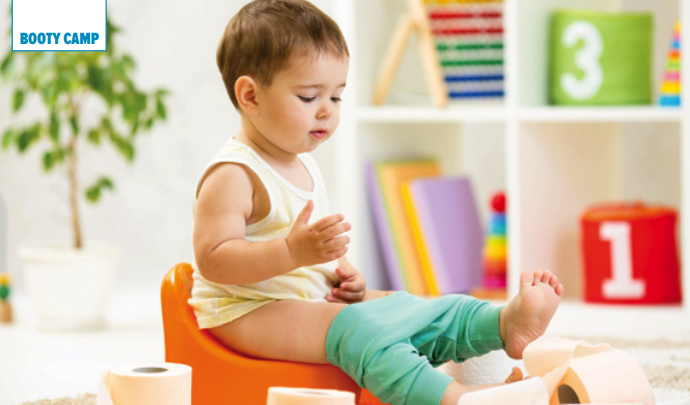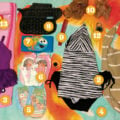Potty training is like the SATs of toddler parenting — hard, confusing, exhausting, sometimes pointless.
Getting through successfully allows you to move on to bigger and better things, but your memories afterward are disjointed and hazy.
There are books, boot camps, videos, trained professionals, singing toilet seats, sticker charts and something — honestly — called the iPotty. What a lumpy mess of nonsense devoted to — of all things — elimination.
My mother joyfully tells and retells the story of potty training me. She got some kit with a doll, treats, a vinyl record and a book.
As she tells it, the kit strictly instructed the parent and child to spend the whole day together devoted to one mission — successful use of the potty. Take the phone off the hook, the book said. These were simpler times.
After the program’s designated nap hour, my mom found me standing in my crib with my hands on my hips. “No potty, no dolly, no treats,” I proclaimed.
So many times have I heard this story, when it came time to potty train my own daughter, I had those words playing in my head like a primal chant. No potty, no dolly, no treats.
I had this big plan: Teach her how to use the actual, regular-sized toilet without bells and whistles, programs or tarps, charts or Hershey’s Kisses. It would be an organic experience. No fuss, no muss. I had a plan.
I also had a new baby.
Timing is everything
It was near impossible to do this while nursing a little one. As I fed my son, pretty much constantly in those early days, my daughter peed on everything — the floor, the high chair, the new couch.
She hated the toilet and clearly hated me for having this baby and insisting that she — upon his arrival — become a big girl while he lounged about on the diaper changing table with Mom as a handmaiden.
There were tears and tantrums — mine, hers. And eventually, there were Diego potty seats and bright red potty chairs and Hello Kitty panties and stickers and Pull-Ups, bathroom books, yogurt raisins and eventually the heavy artillery: jelly beans.
I potty trained in every way imaginable — hard — for the better part of a year.
Here’s the thing: I didn’t take timing into consideration.
Though I’d always been an instinctive parent, when it came to the potty, I listened to peer pressure and general age recommendations and warnings from grandmas at the supermarket. I didn’t pay close enough attention to my own emotional state (postpartum depleted) or my daughter’s: Mom’s got this awful thing called a brother glued to her chest all day long.
Follow the child’s lead
Luisa Urban, a seasoned nanny who’s worked with — and helped potty train — over a dozen children, suggested that parents can start potty training whenever they want. However, things will move along more quickly and with less struggle if they follow the child’s lead.
She also explained that the reward and motivation system might vary for each child — making some of the kits and programs a little too “one size fits all.” Having worked with twins, Urban has seen that each child has his or her own unique struggles and setbacks: One twin had trouble with overnights, and the other — yikes — wanted to play with his poop.
Watching for the signs
After the hazy, crazy potty training year with my daughter, I waited a while with my son — waited for the opportunity to present itself. While there were moments of direction and encouragement, it basically just happened when he was ready. This, in part, was due to my confidence that it could and would. I had been there before.
If anything, I learned to watch for readiness: hiding behind furniture to fill the diaper, taking off diapers, asking to be changed. We started the discussion long before we took action — this is a toilet, this is toilet paper, this is what happens when food goes into our tummy.
I watched for an open window — interest and willingness. And I respected the occasional abrupt closing of the window — frustration and stubbornness. On those days, we went with a Pull-Up, without worrying about the long-term repercussions.
Trial and error
The second time around for me was two steps forward, one step back and learning from experience.
That’s not to say that the famous three-day potty training method won’t work for you. Perhaps the upcoming start of preschool demands that you hone in and get it done, via treats, charts and songs — even fireworks.
Like the SATs, it’s a multiple choice — sometimes you have the answer and sometimes you take a guess. With trial and error, a few horror stories and unavoidable messes, you can eventually put this incredible test behind you and move on.




















